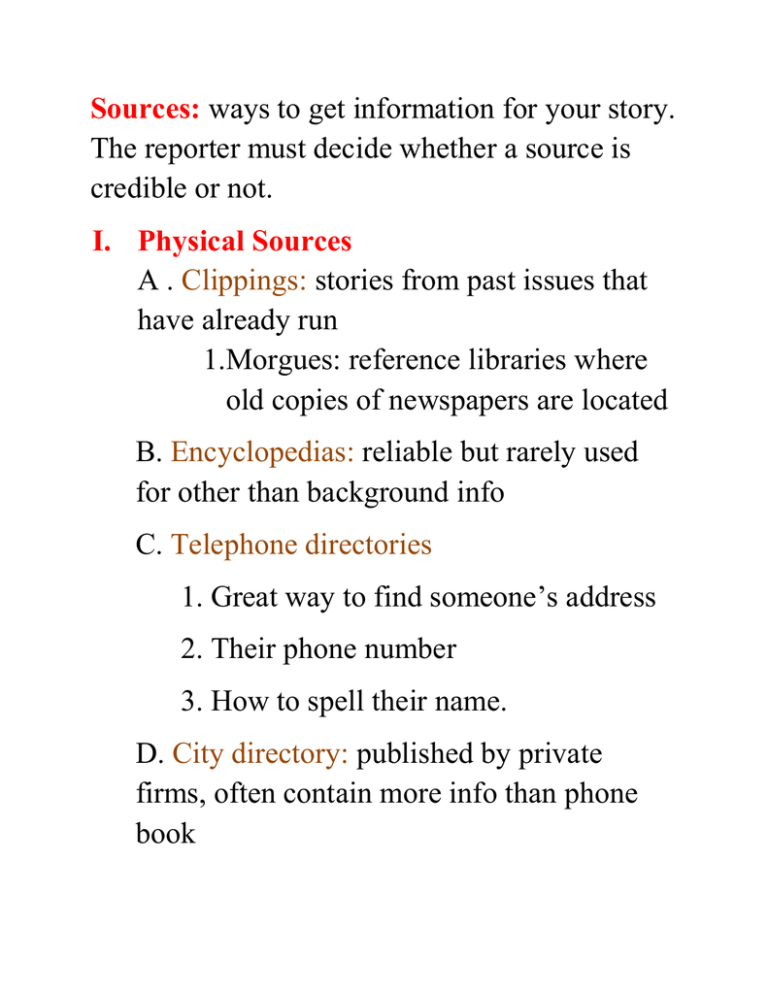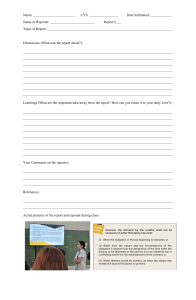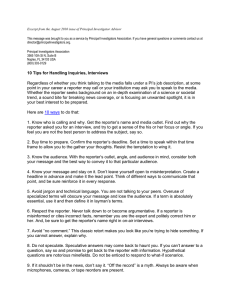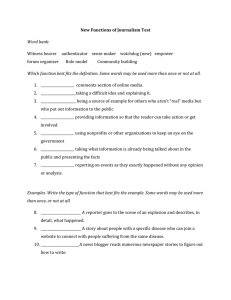Journalism Sources: Physical & Human | Lesson Material
advertisement

Sources: ways to get information for your story. The reporter must decide whether a source is credible or not. I. Physical Sources A . Clippings: stories from past issues that have already run 1.Morgues: reference libraries where old copies of newspapers are located B. Encyclopedias: reliable but rarely used for other than background info C. Telephone directories 1. Great way to find someone’s address 2. Their phone number 3. How to spell their name. D. City directory: published by private firms, often contain more info than phone book E. Libraries: good for background information on detailed stories F. AP Style book: contains facts and how to use those facts in a story. A reporter’s bible. G. Courthouses: many many records are kept on file. Court cases, property ownership, business liability, corporation make ups, arrest records, search warrants. All these are available to the public. II. Human Sources A. People involved directly in the event which you are writing about. B. Usually your main source of information in a story. C. Could be unreliable, however. 1.No witness ever sees the events as they actually happened. 2.Sometimes humans have their own agendas and lie to reporters. 3. May just be making up info to receive attention 4.Never take information at face value from a questionable source D. Always check what the source has told you with either physical sources, or other human sources. E. Are different types of people. a. Elected officials – reliable usually b. Administrative types in government – almost always reliable because their job depends on it (county administrators, principals, superintendents etc). c. Law enforcement: - always dependable what they say is usually taken for fact in court. d. Secretaries who like to talk – always check this information out e. Criminals – always check information f. Random people who walk in and say “I have some information.” F. Anonymous Sources: people who don’t want their names used in the story a. As a student reporter you will NEVER use an anonymous source b.If you use one, you must trust this person with your career. c. They need to be very knowledgeable with what they are talking about. III. Attributing Sources A. On-the-record: you can use the person’s name and connect it to the information. B. Not for attribution: use the info but don’t use the person’s name. C. Background: can’t use the info in the story or the person’s name, but you can follow up on it. IV. Online Sources: be very careful. Use only for background, unless it’s a government website, and then call to confirm the information.





